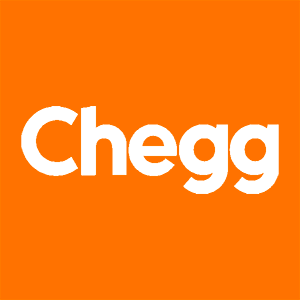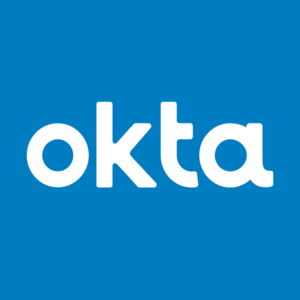
Okta (OKTA)
We’re wary of Okta. Its decelerating revenue growth and expected decline in cash profitability will make it tough to beat the market.― StockStory Analyst Team
1. News
2. Summary
Why Okta Is Not Exciting
Named after the meteorological measurement for cloud cover, Okta (NASDAQ:OKTA) provides cloud-based identity management solutions that help organizations securely connect their employees, partners, and customers to the right applications and services.
- Estimated sales growth of 9.2% for the next 12 months implies demand will slow from its two-year trend
- Products, pricing, or go-to-market strategy may need some adjustments as its 10.2% average billings growth over the last year was weak
- The good news is that its strong free cash flow margin of 31.5% gives it the option to reinvest, repurchase shares, or pay dividends


Okta’s quality doesn’t meet our expectations. We’re hunting for superior stocks elsewhere.
Why There Are Better Opportunities Than Okta
Why There Are Better Opportunities Than Okta
Okta’s stock price of $88.40 implies a valuation ratio of 5.4x forward price-to-sales. Okta’s multiple may seem like a great deal among software peers, but we think there are valid reasons why it’s this cheap.
Our advice is to pay up for elite businesses whose advantages are tailwinds to earnings growth. Don’t get sucked into lower-quality businesses just because they seem like bargains. These mediocre businesses often never achieve a higher multiple as hoped, a phenomenon known as a “value trap”.
3. Okta (OKTA) Research Report: Q3 CY2025 Update
Identity management company Okta (NASDAQ:OKTA) announced better-than-expected revenue in Q3 CY2025, with sales up 11.6% year on year to $742 million. Guidance for next quarter’s revenue was better than expected at $749 million at the midpoint, 1.6% above analysts’ estimates. Its non-GAAP profit of $0.82 per share was 8.4% above analysts’ consensus estimates.
Okta (OKTA) Q3 CY2025 Highlights:
- Revenue: $742 million vs analyst estimates of $729.9 million (11.6% year-on-year growth, 1.7% beat)
- Adjusted EPS: $0.82 vs analyst estimates of $0.76 (8.4% beat)
- Adjusted Operating Income: $178 million vs analyst estimates of $163.2 million (24% margin, 9.1% beat)
- Revenue Guidance for Q4 CY2025 is $749 million at the midpoint, above analyst estimates of $737 million
- Management raised its full-year Adjusted EPS guidance to $3.44 at the midpoint, a 2.4% increase
- Operating Margin: 3.1%, up from -2.4% in the same quarter last year
- Free Cash Flow Margin: 28.4%, up from 22.3% in the previous quarter
- Market Capitalization: $14.22 billion
Company Overview
Named after the meteorological measurement for cloud cover, Okta (NASDAQ:OKTA) provides cloud-based identity management solutions that help organizations securely connect their employees, partners, and customers to the right applications and services.
Okta operates through two main product lines: Workforce Identity Cloud and Customer Identity Cloud. The Workforce Identity Cloud enables organizations to securely manage access for employees, contractors, and partners across applications, devices, and infrastructure. Features include single sign-on capabilities, multi-factor authentication, and automated user provisioning and de-provisioning as employees join or leave organizations.
The Customer Identity Cloud, powered by Auth0 (acquired by Okta), helps companies build secure login experiences for their own customers. Developers use this platform to embed authentication, authorization, and user management into websites and applications without building these complex security features themselves. For example, a streaming service might use Okta's Customer Identity Cloud to manage user logins across devices while protecting against account takeover attempts.
Okta follows a subscription-based SaaS business model, with revenue primarily coming from multi-year contracts. The company serves thousands of organizations across virtually every industry, from small businesses to Fortune 50 enterprises. Its platform integrates with over 7,000 applications and services, including major providers like Microsoft, Google, Salesforce, and Amazon Web Services. This extensive integration network creates powerful network effects—as Okta adds more applications and customers to its ecosystem, the platform becomes increasingly valuable to existing and potential users.
4. Identity Management
As software penetrates corporate life, employees are using more apps every day, on more devices, in more locations. This drives the need for identity and access management software that help companies efficiently manage who has access to what, and ensure that access privileges are secure from cyber criminals.
Okta's primary competitor is Microsoft with its Entra ID (formerly Azure Active Directory) product. Other competitors include Ping Identity, ForgeRock, CyberArk, OneLogin, and cloud service providers offering their own identity management solutions.
5. Revenue Growth
A company’s long-term sales performance can indicate its overall quality. Even a bad business can shine for one or two quarters, but a top-tier one grows for years. Over the last five years, Okta grew its sales at an impressive 29.9% compounded annual growth rate. Its growth beat the average software company and shows its offerings resonate with customers.
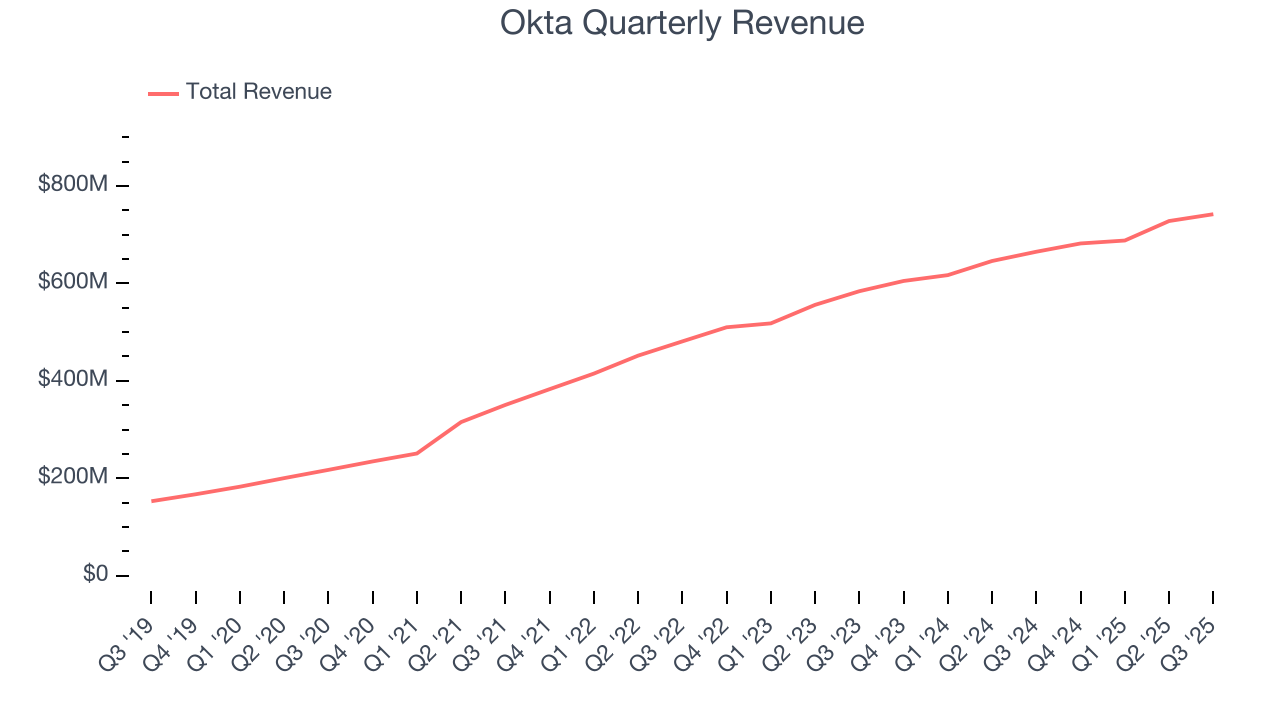
We at StockStory place the most emphasis on long-term growth, but within software, a half-decade historical view may miss recent innovations or disruptive industry trends. Okta’s recent performance shows its demand has slowed significantly as its annualized revenue growth of 14.5% over the last two years was well below its five-year trend. 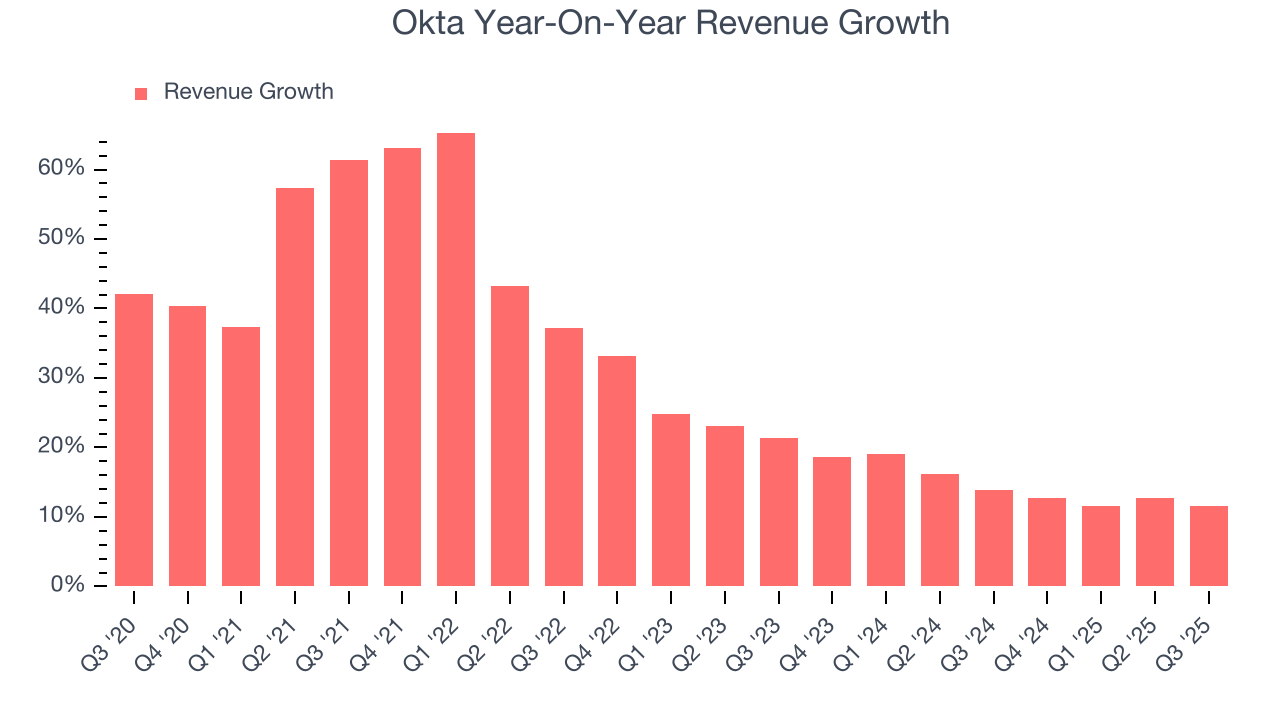
This quarter, Okta reported year-on-year revenue growth of 11.6%, and its $742 million of revenue exceeded Wall Street’s estimates by 1.7%. Company management is currently guiding for a 9.8% year-on-year increase in sales next quarter.
Looking further ahead, sell-side analysts expect revenue to grow 8.2% over the next 12 months, a deceleration versus the last two years. This projection is underwhelming and indicates its products and services will see some demand headwinds.
6. Annual Recurring Revenue
While reported revenue for a software company can include low-margin items like implementation fees, annual recurring revenue (ARR) is a sum of the next 12 months of contracted revenue purely from software subscriptions, or the high-margin, predictable revenue streams that make SaaS businesses so valuable.
Okta’s ARR came in at $2.9 billion in Q3, and over the last four quarters, its growth was underwhelming as it averaged 12.2% year-on-year increases. This performance mirrored its total sales and suggests that increasing competition is causing challenges in securing longer-term commitments. 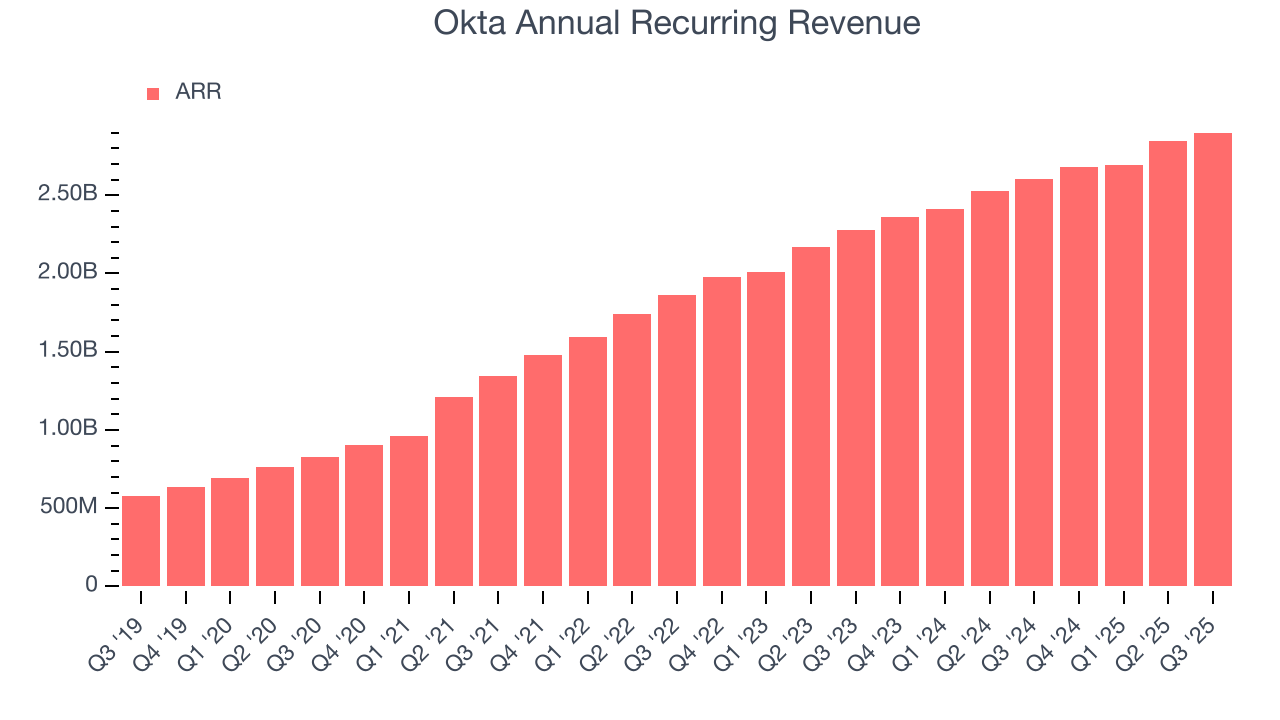
7. Customer Acquisition Efficiency
The customer acquisition cost (CAC) payback period measures the months a company needs to recoup the money spent on acquiring a new customer. This metric helps assess how quickly a business can break even on its sales and marketing investments.
It’s relatively expensive for Okta to acquire new customers as its CAC payback period checked in at 75.5 months this quarter. The company’s slow recovery of its sales and marketing expenses indicates it operates in a highly competitive market and must invest to stand out, even if the return on that investment is low. 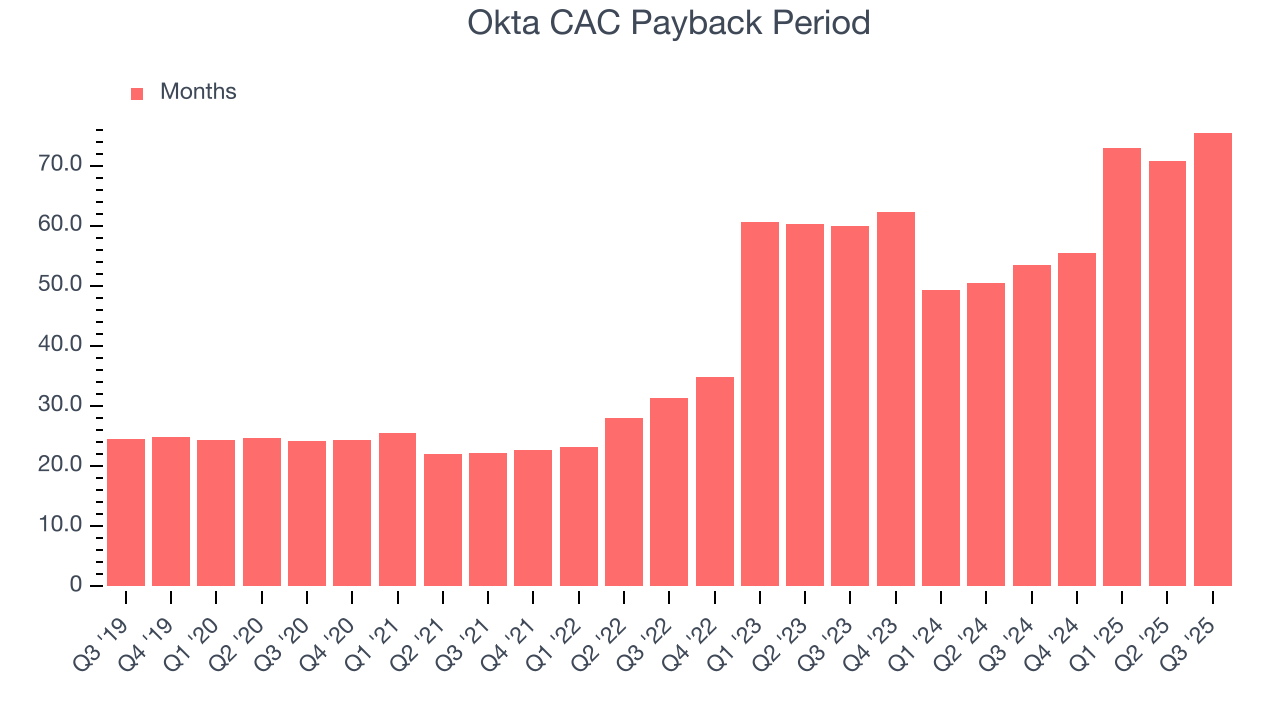
8. Gross Margin & Pricing Power
For software companies like Okta, gross profit tells us how much money remains after paying for the base cost of products and services (typically servers, licenses, and certain personnel). These costs are usually low as a percentage of revenue, explaining why software is more lucrative than other sectors.
Okta’s gross margin is good for a software business and points to its solid unit economics, competitive products and services, and lack of meaningful pricing pressure. As you can see below, it averaged an impressive 77.1% gross margin over the last year. That means for every $100 in revenue, roughly $77.08 was left to spend on selling, marketing, and R&D.
The market not only cares about gross margin levels but also how they change over time because expansion creates firepower for profitability and free cash generation. Okta has seen gross margins improve by 3.6 percentage points over the last 2 year, which is very good in the software space.
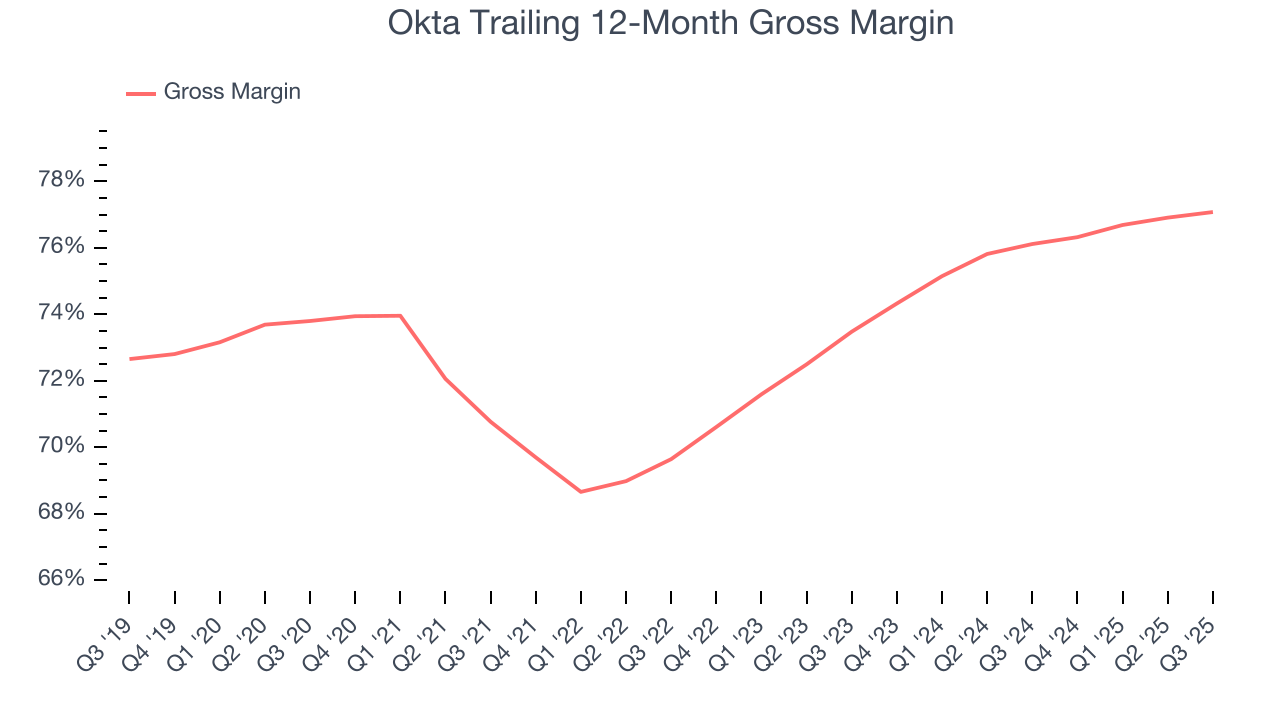
This quarter, Okta’s gross profit margin was 77.1%, in line with the same quarter last year. Zooming out, the company’s full-year margin has remained steady over the past 12 months, suggesting its input costs have been stable and it isn’t under pressure to lower prices.
9. Operating Margin
While many software businesses point investors to their adjusted profits, which exclude stock-based compensation (SBC), we prefer GAAP operating margin because SBC is a legitimate expense used to attract and retain talent. This is one of the best measures of profitability because it shows how much money a company takes home after developing, marketing, and selling its products.
Okta has done a decent job managing its cost base over the last year. The company has produced an average operating margin of 3.9%, higher than the broader software sector.
Looking at the trend in its profitability, Okta’s operating margin rose by 10.4 percentage points over the last two years, as its sales growth gave it operating leverage.
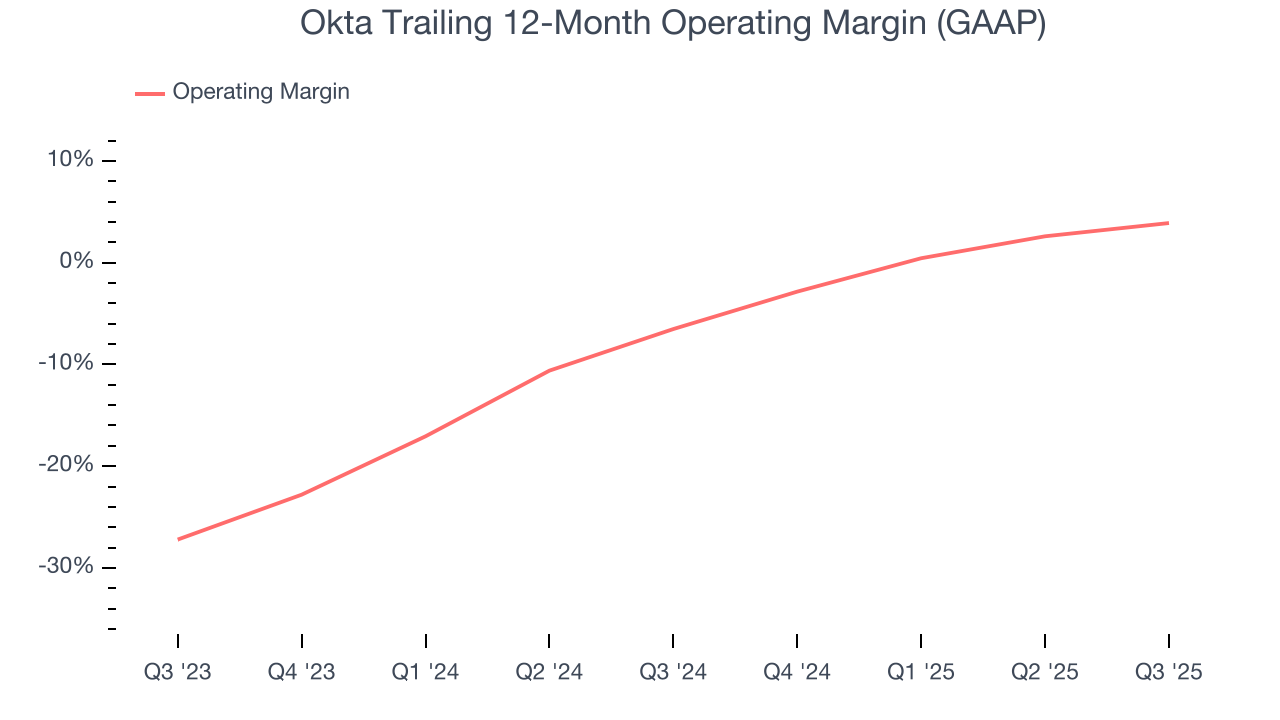
This quarter, Okta generated an operating margin profit margin of 3.1%, up 5.5 percentage points year on year. The increase was solid, and because its operating margin rose more than its gross margin, we can infer it was more efficient with expenses such as marketing, R&D, and administrative overhead.
10. Cash Is King
If you’ve followed StockStory for a while, you know we emphasize free cash flow. Why, you ask? We believe that in the end, cash is king, and you can’t use accounting profits to pay the bills.
Okta has shown terrific cash profitability, driven by its lucrative business model that enables it to reinvest, return capital to investors, and stay ahead of the competition while maintaining an ample cushion. The company’s free cash flow margin was among the best in the software sector, averaging an eye-popping 31.5% over the last year.
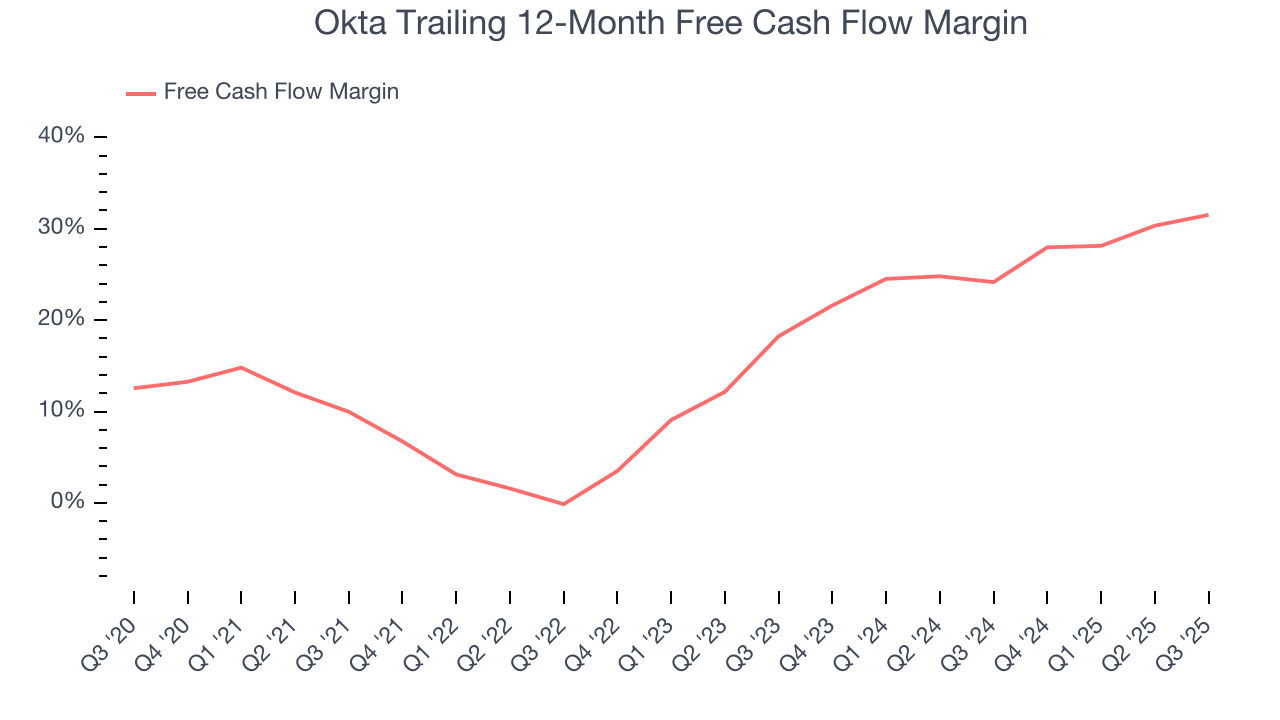
Okta’s free cash flow clocked in at $211 million in Q3, equivalent to a 28.4% margin. This result was good as its margin was 5.3 percentage points higher than in the same quarter last year, but we wouldn’t put too much weight on the short term because investment needs can be seasonal, causing temporary swings. Long-term trends are more important.
Over the next year, analysts predict Okta’s cash conversion will fall. Their consensus estimates imply its free cash flow margin of 31.5% for the last 12 months will decrease to 29.1%.
11. Balance Sheet Assessment
Companies with more cash than debt have lower bankruptcy risk.
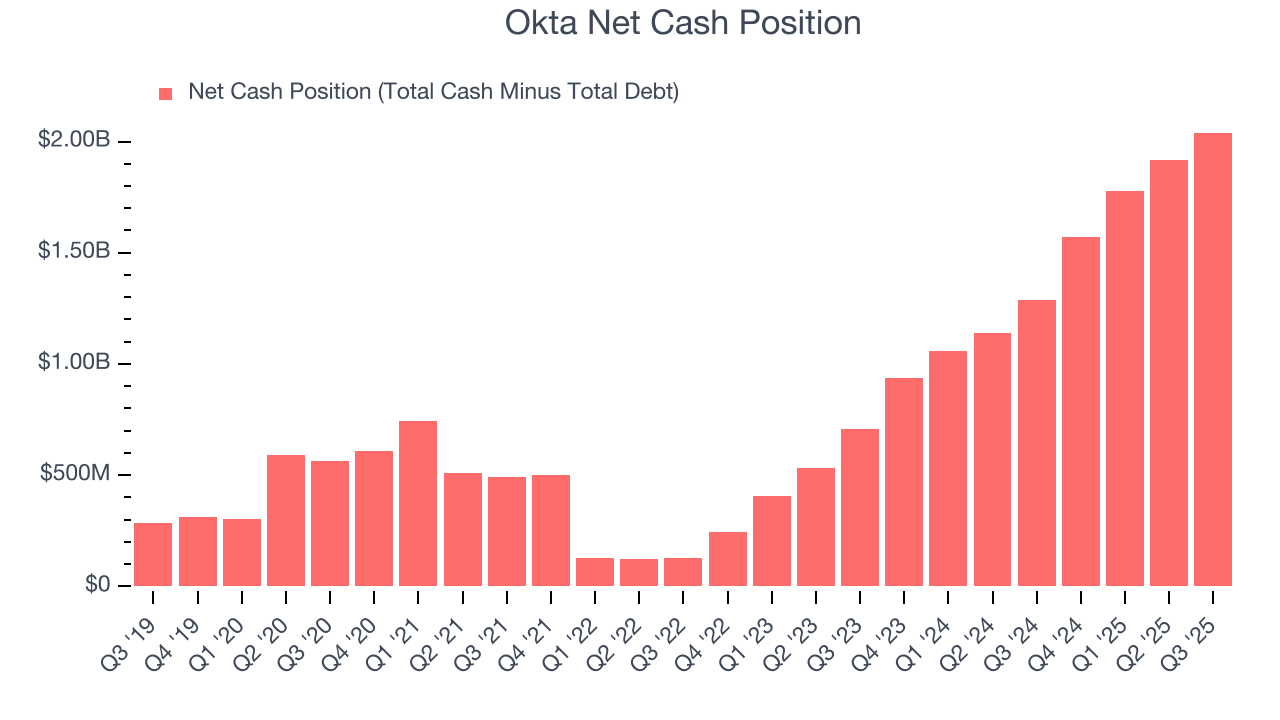
Okta is a profitable, well-capitalized company with $2.46 billion of cash and $423 million of debt on its balance sheet. This $2.04 billion net cash position is 13.4% of its market cap and gives it the freedom to borrow money, return capital to shareholders, or invest in growth initiatives. Leverage is not an issue here.
12. Key Takeaways from Okta’s Q3 Results
It was great to see Okta’s full-year EPS guidance top analysts’ expectations. We were also glad its revenue guidance for next quarter exceeded Wall Street’s estimates. Overall, this print had some key positives. Investors were likely hoping for more, and shares traded down 3.5% to $79.60 immediately following the results.
13. Is Now The Time To Buy Okta?
Updated: December 24, 2025 at 9:01 PM EST
The latest quarterly earnings matters, sure, but we actually think longer-term fundamentals and valuation matter more. Investors should consider all these pieces before deciding whether or not to invest in Okta.
Okta’s business quality ultimately falls short of our standards. Although its revenue growth was strong over the last five years, it’s expected to deteriorate over the next 12 months and its ARR has disappointed and shows the company is having difficulty retaining customers and their spending.
Okta’s price-to-sales ratio based on the next 12 months is 5.4x. This valuation is reasonable, but the company’s shakier fundamentals present too much downside risk. We're fairly confident there are better investments elsewhere.
Wall Street analysts have a consensus one-year price target of $112.62 on the company (compared to the current share price of $88.40).
Although the price target is bullish, readers should exercise caution because analysts tend to be overly optimistic. The firms they work for, often big banks, have relationships with companies that extend into fundraising, M&A advisory, and other rewarding business lines. As a result, they typically hesitate to say bad things for fear they will lose out. We at StockStory do not suffer from such conflicts of interest, so we’ll always tell it like it is.


